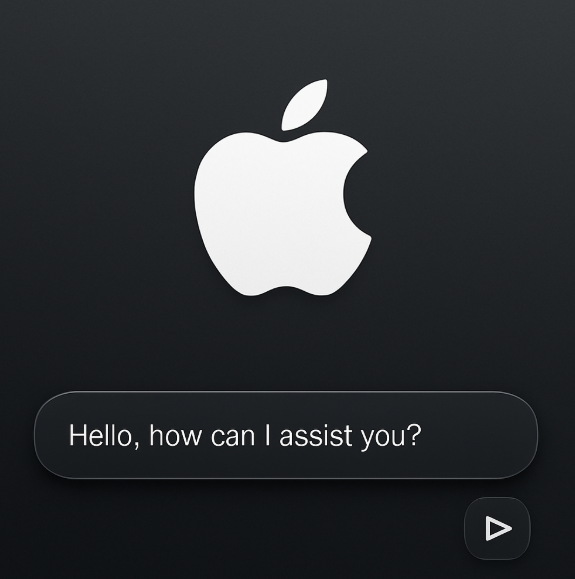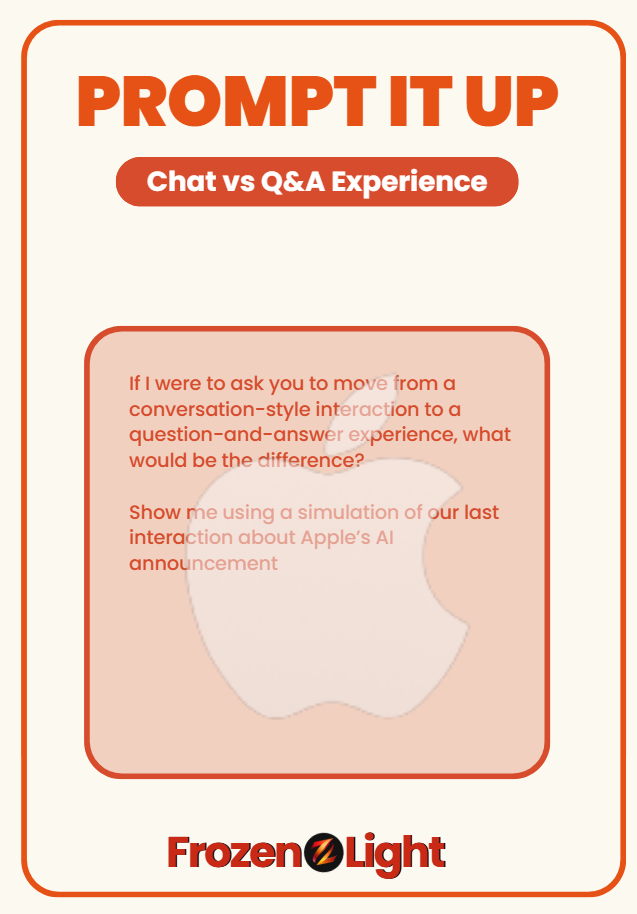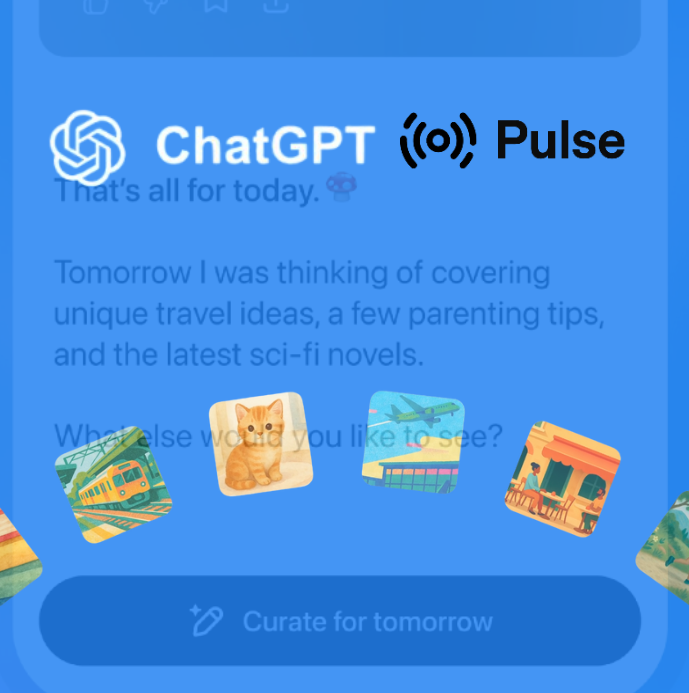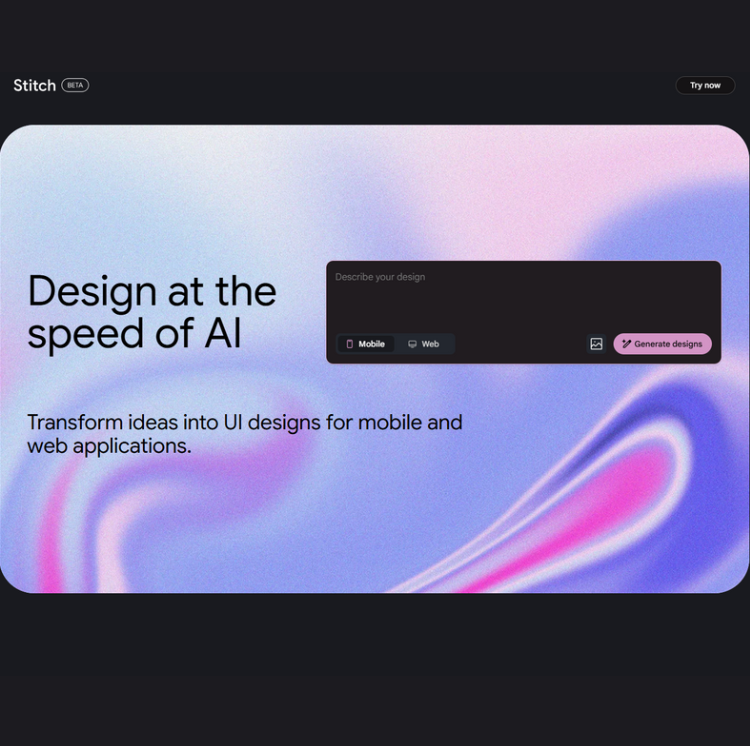
Yesterday’s reports made it clear: Apple is stepping into the AI game in a big way. The company has formed a new team, Answers, Knowledge and Information (AKI), led by former Siri head Robby Walker, to build its own AI-powered “answer engine.”
This system is designed to search the web and respond in a conversational style, putting Apple in direct competition with ChatGPT and Google’s Gemini. Plans are already in motion to integrate it into Siri, Spotlight, and Safari, with a possible standalone app in the future.
What the Apple Is Saying
Apple is finally making AI a top priority, building its own “answer engine” and overhauling Siri with a fully AI‑driven backend. Leadership admits they’ve been late to the party but says they’re now investing heavily, exploring acquisitions, and aiming for a major AI rollout in 2026.
“Apple must do this. Apple will do this. This is sort of ours to grab.” – Tim Cook
What is means (in Human Words)
In human words, Apple is finally building its own version of ChatGPT or Gemini. Instead of relying so much on Google Search or outside AI tools, they want their own system that can understand your questions, find answers, and talk back naturally. It means that in the future, when you ask Siri something, it might actually feel smart - and it’ll be Apple’s own tech running the show.
Let’s Connect the Dots
When we first looked at this story, we weren’t sure if it was newsworthy. Your attention span is short, and we asked ourselves: is this really worth your time? But once we looked at the bigger picture, we decided… maybe it is. Here’s why.
Apple’s Own Research on AI LLM’s
Earlier this year, Apple released a research paper called The Illusion of Thinking: Understanding the Strengths and Limitations of Reasoning Models via the Lens of Problem Complexity.
The study looked at how large reasoning models (LRMs) perform on tasks that require multi-step thinking. Apple’s researchers found that while these models can handle simple problems well, their accuracy drops sharply when the complexity increases - for example, in puzzles like the Tower of Hanoi. The conclusion? These AI systems aren’t really “thinking” in a human sense; they’re following learned patterns, and those patterns break down when the challenge goes beyond their training comfort zone.
If you want to read the full document, you can download it directly from Apple here:
http://ml-site.cdn-apple.com/papers/the-illusion-of-thinking.pdf
The Differences in Perspective
Apple’s vision for AI is different from that of other leading players in the space. While OpenAI, Google, Anthropic, and others are racing to make AI feel more human-like and expand its “thinking” capabilities, Apple is openly acknowledging the limits of current AI. Their own research frames AI as powerful pattern-recognition systems, not true reasoning entities.
This shapes their strategy: instead of marketing AI as a “digital brain” that can do it all, Apple seems focused on building tightly integrated, privacy-conscious AI features that fit naturally into its ecosystem - features that work well for the tasks they’re designed for, without promising human-like thinking.
By contrast, competitors often pitch their models as increasingly capable, general-purpose systems that can be applied to almost any domain, with some even hinting at future “reasoning” or “agent-like” intelligence.
Comparison Table: Apple vs. Leading LLM Vendors
|
Vendor |
Core Vision of AI |
Public Messaging Style |
Focus Areas |
Integration Approach |
Apple’s Difference |
|
Apple |
AI as a highly capable tool, but not truly “thinking.” Emphasis on accuracy within defined limits. |
Cautious, research-driven, privacy-first. |
Siri, device-level AI, contextual assistance. |
Deep integration into Apple ecosystem; privacy-focused on-device and hybrid processing. |
Positions AI as a precise assistant, not a human-like mind; limits expectations. |
|
OpenAI |
AI as a general-purpose reasoning assistant capable of multi-domain expertise. |
Bold, future-facing, human-like framing. |
ChatGPT, developer APIs, agent-based workflows. |
Cloud-first, integrated through APIs into multiple platforms. |
Apple rejects framing AI as human-like; less focus on multi-domain generalisation. |
|
Google (Gemini) |
AI as a multimodal, always-learning universal assistant. |
Competitive, feature-heavy, vision of “AI everywhere.” |
Search, Workspace, Android integration, multimodal tools. |
Deep embedding in Google services + Android devices. |
Apple avoids “AI everywhere” narrative, focuses on controlled, curated integration. |
|
Anthropic (Claude) |
AI as a helpful, harmless, honest assistant focused on reasoning and safety. |
Safety-first, trust-building, alignment-focused. |
Claude models, API integrations, enterprise AI. |
Primarily cloud-delivered with strong safety constraints. |
Apple focuses less on safety marketing, more on ecosystem privacy and accuracy. |
|
Microsoft (Copilot) |
AI as a work productivity booster across tools. |
Enterprise productivity-driven, workflow automation. |
Copilot across Office, Azure AI, Windows. |
Embedded in productivity software and cloud services. |
Apple isn’t pursuing enterprise-first positioning; more consumer-focused integration. |
The Team: Answers, Knowledge and Information (AKI)
The name of Apple’s new team - Answers, Knowledge and Information (AKI) - is a hint in itself. It points to something very different from a “chat” experience.
Most AI leaders today focus on chat, where the AI becomes a conversation partner, often engaging in open-ended dialogue. That’s the world of ChatGPT, Claude, and Gemini - tools designed to feel human-like, keep a back-and-forth going, and adapt to a user’s tone and style.
Apple’s naming choice signals a different intent. “Answers” suggests precision and completion - you ask a question, you get the information you need. It’s not about chatting for the sake of chatting. “Knowledge” and “Information” show the emphasis on factual responses, not personality-driven conversation.
In short, the difference is:
-
Chat models aim to be companions you can talk to endlessly.
-
Apple’s approach appears to be a focused Q&A engine that gets you the answer quickly, with less fluff.
That could mean a more streamlined Siri or Spotlight experience - one that’s less about imitating human conversation and more about delivering the right information fast.
Storytelling: Inside the Strategic Room at Apple HQ
Picture this: a high-level meeting inside Apple’s headquarters. Senior executives, engineers, and product leads are gathered around the table, mapping out the company’s AI vision.
The topic? How to balance two worlds - the privacy and experience Apple is known for, and the current AI experience that thrives on personal data to create a richer, more conversational interaction.
We already know there’s a direct link between how much an AI system knows about you and how natural it can make the conversation feel. The more context it has, the better it can anticipate your needs. But for a company that prides itself on protecting personal information, there’s an immediate tension.
So imagine this discussion: how do we take the strengths of question-and-answer precision, combine it with just enough personal information to be helpful, and still hold the privacy line? The goal wouldn’t be to copy the “talk forever” style of other AI chatbots, but to build something in-between - where you get accurate answers, plus the relevant context about you, only when it’s truly needed.
We’re not saying this is exactly what’s happening inside Apple. But if they’re planning a new AI experience, this kind of conversation would make a lot of sense.
Bottom Line
The only thing we can say for sure - Apple has joined the AI race. No timelines, no product names, no confirmed launch plans. Just the fact that they’re in the game now, and that alone changes the field.
Prompt It Up
Want to see the difference between a question-and-answer experience and a chat-style interaction?
Copy and paste this into your favourite LLM and watch how the style changes:
“If I were to ask you to move from a conversation-style interaction to a question-and-answer experience, what would be the difference? Show me using a simulation of our last interaction about Apple’s AI announcement.”

Frozen Light Team Perspective
Yaaa!!! Apple is entering the race - yaaaa!!! We love it. Why? Because it’s Apple and we love them.
We know it’s maybe not the overall sentiment of everyone, so let’s look at it this way… They’re entering the game late? Disadvantage??? No. They’re coming in with full power, knowing what we already have, what we may want done differently, and what they believe we’re missing but don’t even know yet.
We see this as a great advantage for us. If there’s a chance to see something new, this is it - our chance, as AI enthusiasts, to see something in this race that could change the game. And we love even just thinking about it.
We could be completely wrong, but right now we feel like kids waiting for the next Harry Potter book. Not knowing and dreaming is part of the fun.
The first thing we got from them entering the game is a reminder that there’s a difference between question-and-answer and conversation. You can experience that difference using our prompt - and you’ll see how it affects the accuracy of the information you get. Honestly, we follow AI conversations closely, and we see a lot of talk about optimising prompts. But maybe it’s not just the prompt… maybe it’s the mode.
We tried it ourselves, and the information we got was sharper. The workflow felt different - it takes some getting used to 🙂. Try it for yourself.
All in all, a good thing that Apple entered the game. One last thing - read their article. It’s worth your time. They got a lot of heat for it, but they might just have something right.








